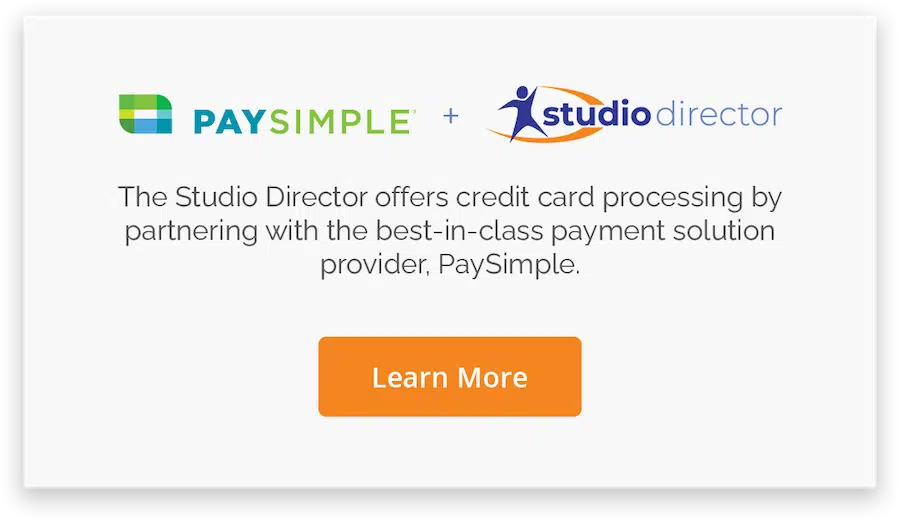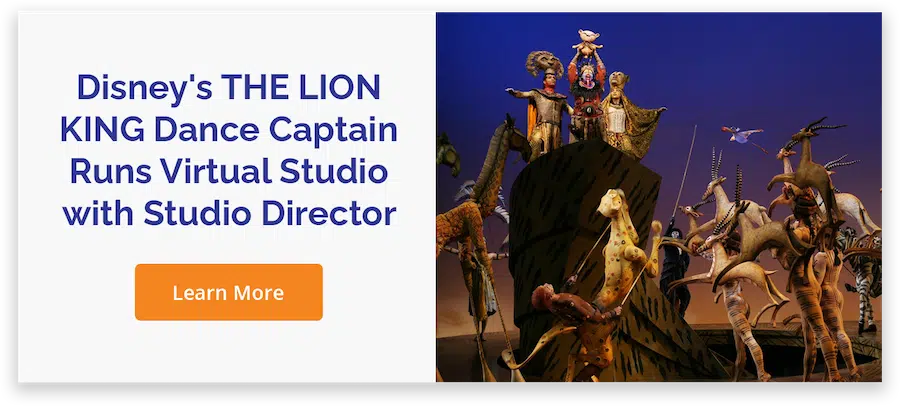Have you ever wondered how to start your own dance studio? Or, if you have already started researching how to open one, perhaps you’ve been wondering if you have what it takes to run a new dance studio and make it successful. Does this sound like you? Then, this post is for you! Here’s how to open a dance studio, from step one to your studio’s grand opening and beyond.
Opening A Dance Studio Checklist
Since we first wrote this post at The Studio Director, we’ve expanded on the information here so that all studio managers can feel confident and excited as they embark on their journey to studio ownership. We know that studio ownership itself has certainly changed recently as well, so we’ve added updated information on offering online dance lessons and noted the latest trends in our industry. Throughout this post, you’ll also find links to in-depth articles on related dance studio ownership topics.
While all of this information is necessary as you get started, sometimes a checklist is the best way to manage your tasks. Here’s your roadmap, with more information below on each of these points.
Jump to Section
- Shadow A Studio Or Owner You Respect
- Prepare For The Many Roles You’ll Take On
- Build A Name For Yourself In Your Community
- Create Your Dance Studio Business Plan (and estimate the finances involved!)
- Find Your Perfect Studio Location
- Develop Your Systems And Processes
- Set Up Your Studio Space
- Hire Your Dance Studio Staff
- Get The Word Out With Marketing
- Start From A Place Of Organization
- Quick Reference Guide For Starting a Dance Studio
Ready to get started? It’s time to learn how to open a dance studio of your dreams!
1. Shadow A Studio Or Owner You Respect
Do you know another studio manager that you respect or look up to? Love a local studio that’s on the other side of town or in another city? Know of a studio who excels at online dance lessons? The best way to learn about starting a dance studio is to actually work at one.
If there’s a local dance studio that has been around for a while, pick up some hours at their studio and gather notes. Or, find a studio manager you love and ask if you can mentor under them.
While there, volunteer to fill in for the different roles or jobs where they need help so you can see how things run from all angles. This will clue you into important challenges in the dance business and how they are solved.
In particular, make note of:
- What problems occur and how they solve them
- How money comes in and out of the business
- The different roles staff members play
- How the studio handles marketing
- How the studio communicates with parents and students
More importantly during this period, make sure you enjoy the work! Opening a dance studio is a fantastic way to share your love of a dance with a larger audience, but it’s not for everybody—and that’s okay.
2. Prepare For The Many Roles You’ll Take On
Along with understanding the business, you’ll also need a clear view of the different roles you will take on as the owner.
Beyond choreographing and teaching classes, you are the person who has to keep the many parts of the business running. Some of those roles include:
- Dance studio manager: You’ll make sure schedules and daily activities are running smoothly. You will need to be able to communicate what you want, what needs to improve, and ensure that your staff is focused on your goals.
- Mentor: Every day, you’ll embody the work ethic and attitude you expect staff members and students to take on themselves.
- Entrepreneur: Your work doesn’t stop when the studio opens. You will continue to grow and develop new studio plans. As an entrepreneur, you’ll also be heavily involved in billing, scheduling, marketing, community outreach, events coordination, customer service, and much more.
- Techie: Offering online dance lessons? Make sure you (or someone on your team!) can easily troubleshoot virtual class enrollment, set-up, and your online class platform for teachers and students alike.
Learn early on which of these roles you naturally gravitate towards, and which would be better to outsource to another trusted teacher or staff member.

3. Build A Name For Yourself In Your Community
Usually, dance studio owners go into business confidently knowing they already have enough of a following to fill classes from the get-go.
If you do not have a big enough following yet, some ways to find more students include:
- Offering dance services to local schools, gyms, and churches
- Giving discounts for people who refer your classes to friends and families
- Advertising for your classes at nearby businesses that are not competitors, but will have the clientele that would take an interest in dance (think yoga studios or daycares)
- Sharing your personality and approach to dance on social media so others in your community can learn more about you
This is a step that you do far before finding your location or setting up your business plan because it takes time. Thankfully, you can work on this as you go through your other dance studio start-up tasks.
4. Create Your Dance Studio Business Plan
Your dance studio business plan is a document that lays out your business goals and how you plan to achieve them. It sets a solid foundation for your studio for years to come. We have more information about creating a business plan here, but yours should cover the following sections, at a minimum:
- Executive summary
- Company description
- Market analysis
- Products and services
- Financial projections
- Marketing overview
Let’s look at each of these in more detail. Note, too, that your business plan may contain much more.
Executive summary and company description
The executive summary should summarize your main business goals, vision, and core values. This should not be more than a few sentences. You’ll likely have an easier time writing your summary last after you’ve covered all of the other details.
Following that, describe what sets your studio apart. This is typically what you will use to pitch your company when you are marketing it. It should include the services you plan to offer, the types of classes you’ll have, and what sets you apart from other studios.
This section should also clearly establish what type of legal business entity your studio will be, and how you’ll comply with any local licensing or regulatory requirements.
Market analysis
It’s time to research your potential customers! Building a following well before you begin the process of opening your dance studio can help tremendously with this step. The more people who know you, the more likely you’ll know what types of dancers will sign up once you open your doors.
In addition to researching the people who already know you, though, you will have to research your local market, potential customers, and competitors. This section should include all the details you gather about the size of the dance industry in your area and how you will fit into this equation.
Start off by listing the dance studios you will be in direct competition with and the number of students they serve. This will help you determine how many students you should bring in and define your pricing structure.
In addition, you may want to do surveys and host focus groups with your potential customers to ask them what they’d like to see in a dance studio in your area.
For a larger industry-wide study, we recommend reading our post on dance studio industry stats and trends. This will help you get a better idea of where our industry is at right now, and where it might grow over the next few years.
Products and services
Once you have thoroughly analyzed your market, you can decide on the services that will attract the widest range of students. In this section, list in greater detail the classes you plan to offer. You can also outline the benefits that students may receive from taking your classes.
This section will also include any other plans you have outside of classes and memberships to make money, such as dance apparel, competitions, and recitals.
Financial projections
One of the most necessary sections of your business plan is the funding plan and your financial expectations once in business.
If you need a loan to get started, having a transparent and organized assessment of your current financial position and future projections will show potential investors that you know what you’re doing.
This portion will also detail where your revenue will come from, how much your bills will cost monthly and annually, and your class pricing. In this section, think of everything you will need to open your doors from equipment like dance studio mirrors, down to the rolls of toilet paper in the bathrooms. The more thorough you can be here, the better.
How much does it cost to open a dance studio though? We’ve created a full post on how much it costs to run a dance studio here.
Marketing overview
In the most basic sense, this part of your studio business plan is all about how you’ll get the word out about your dance studio. Start by establishing your brand. What’s your studio’s name, logo, and brand identity? Learn more about that here. You can find ideas for fun and catchy dance studio names in our earlier post.
Also, give a general overview of the marketing channels you’ll use and what portion of your budget you’ll allocate to marketing. You can include a strategy for growth if you have a plan for targeting other markets in the future as well. Review our full post on social media for dance studios to get started on this one.
5. Find Your Perfect Studio Location
Once you have figured out how your business will run and what your financial situation is, you can start looking for your studio. Do it in this order so you know how much you have for rent and extra costs that will come with the location you decide on.
A dance studio has its own unique requirements. First ask yourself how much space you’ll need? Do you want one room or multiple studios in your facility? Will you want a room set up for virtual dance lessons? You will also consider the need for:
- A lobby
- An office
- Storage
- Bathrooms
- Retail space
- Hallways
- A waiting room for parents
In addition, don’t neglect things like:
- Parking options: Does this space have parking that will accommodate the number of students you hope to attract?
- Safety: Parents should feel comfortable and safe bringing their child to your location.
- Visibility: It may cost more to be in a highly-visible location, but it also makes for easier, passive marketing.
Remember that you will have monthly payments that you will have to meet. Be very clear with your landlord on what those are upfront, along with any unforeseen payments that could come along. If you decide to buy the building, keep in mind that you will be responsible for maintenance costs.

6. Develop Your Systems And Processes
It’s time to make a plan for running your studio once it opens. This is separate and more detailed than your business plan, but it’s just as important.
Note too that the more organized you make your processes and systems at the beginning, the fewer people you will need to hire to carry them out. This is why so many dance studio owners use dance studio management software. It not only provides them with a guide to carry out their management duties and market their studio, but it also allows for a smaller staff and lower labor costs. It streamlines their daily tasks so they can focus more of their attention on the fun parts of running a dance studio. You can learn more about choosing the best dance studio software here.
Before your grand opening (and even hiring), consider the systems and processes you’ll have in place for the following.
Automating your administrative tasks
Enrollment, billing, and other tasks can be carried out through dance studio software. Organize everything into one place that you can access with a click of a button.
Some tools can also analyze your data and track trends in your business over time so you can make well-informed decisions as you move forward. Because of this, it’s best to have this tool in place from the start. You can learn more about the benefits of an online registration process here.
Offering seamless payment options
Your customers expect payments to be easy and built around the types of payment options they already use every day. That means offering debit and credit card payments, whether in-person or online.
Make it even easier for customers with set-it-and-forget-it options, like recurring automated billing and saved payment info. Learn more about payment processing for your dance studio here.

Setting up online dance lessons
Online or virtual dance lessons represent an exciting new way to reach your students no matter where they are. Rather than face downtimes during long summer breaks or miss out on lessons due to other factors, these types of classes connect students with their teachers right from home! Many teachers also love these types of lessons, as it offers them more flexibility for teaching and studio time.
Today’s video streaming services make online dance lessons even easier. By using a system like Zoom, Google Meet, Facebook, or YouTube, you can connect instantly with students. Some dance studio software tools even offer virtual classroom management directly from the software. This allows students to sign up for an online class just like they would an in-person class, and provides set-up assistance for studios, teachers, and students.
Marketing your studio
Marketing begins before you put together a business plan, but at this step be clearer about how you’ll market your studio (more on that below) and who will handle marketing for you. For example, you can handle these tasks, have a staff member handle them, automate some of these tasks with studio management software, or outsource it to a marketing agency.
Registering new students
Make registration easy with a ready-made registration form. We have full details on what yours needs to include here. Likewise, studio management software can automate this.
Developing an annual calendar
Figure out the major seasons for your studio. Consider separating your annual calendar into instruction periods, performances and recitals, and breaks, so students (and parents!) know what to expect each year.
7. Set Up Your Studio Space
Items like flooring, mirrors, and ballet barres are integral features of a dance studio. We go more in-depth into the purchasing choices and decisions behind each of those major features in the linked posts. Don’t stop there, of course. Make sure to decorate your dance studio so it invites creativity and movement.
Offering online dance lessons? Learn from other studio owners who expanded into virtual lessons to reach more students, provide more flexibility for their staff, and more. In this article, a studio owner discusses the specific logistics and set-ups they used to run these types of lessons successfully.

8. Hire Your Dance Studio Staff
You might not need a very large staff, especially when you first start out. However, keep in mind that you might not have time to actually teach many classes when you first open. As an owner, there may be too many tasks on your plate in the beginning. To that end, your first hire may be someone else to teach your classes, at least short-term. Another may help with front office and administrative tasks.
Whether you have one or many staff members, make sure everyone knows what’s expected of them from day one. You can accomplish this by:
- Making a clear outline of each position and what they do on a daily, weekly, and monthly basis
- Figuring out a recruitment process and using a trial period for new teachers and staff
- Creating a training manual with step-by-step procedures for new hires
- Using a standard dance teacher contract that formally defines pay, benefits, and your expectations
9. Get The Word Out With Marketing
You may already have a good collection of people ready to sign up for your classes. Even so, it’s important to spread the word about opening your dance studio.
To start, your website is going to be your prime source for gaining new students. This is where parents will view your location information, contact info, positive reviews, class schedule, and more.
Beyond your website, your ongoing marketing tasks will include:
- Increasing word-of-mouth marketing and referrals
- Building your social media presence
- Growing your email list for future newsletters
- Gathering positive reviews on Google and social media
- Developing partnerships with local businesses and charities
Once you have these tasks set up, it’s time to market your official grand opening. Some ideas include running ads in local papers and on social media, having your students perform at outdoor events in your community, or finding small business events to participate in.
Find even more easy and effective dance studio marketing ideas here.
10. Start From A Place Of Organization
There are many things that will go onto your opening a dance studio checklist, many of which we couldn’t fit into this post. Still, we hope it has given you some insight into opening a dance studio.
As we’ve noted throughout this post on how to open a dance studio, one of the best ways to prepare is by investing in studio management software like the one we offer at The Studio Director. Not only does high-quality software keep your business in order, it helps with marketing and provides additional value to your customers with easy registration, payments, and more.
Any great studio management software will allow you to:
- Offer multiple types of payment options, online and in-person, seamlessly
- Organize your staff schedules and time-sheets
- Handle online registration, as well as costume rental and recital enrollment
- Track inventory if you sell merchandise
- Set up automatic email newsletters to new and existing students
- Allow customers to set up recurring or one-time payments
- Integrate the customer-facing functionality into your existing website or a dedicated mobile app
- Manage all of your data from a cloud-based system
People do not start a dance studio to focus on the administrative tasks. They do it out of love for their craft. Give yourself the opportunity to truly enjoy the studio you create by starting it from a place of organization.
Quick Reference Guide for Starting a Dance Studio
| Category | What I Wish I Knew Before Opening a Dance Studio | Helpful Information |
|---|---|---|
| Business Basics | Choosing the right business entity | Research the different types of business entities to understand which offers the most benefits for your dance studio. |
| Finance | Opening a business bank account | A separate bank account keeps personal and business finances organized and simplifies business tax filings. |
| Legal | Understanding business licenses and taxes | Ensure you have the necessary licenses and are aware of the taxes that apply to running a dance studio. |
| Market Insight | The importance of market research | Conduct market research to gauge demand for dance classes, preferred dance styles, and competition. |
| Studio Space | Choosing the right dance studio space | Consider location, size, and floor type when selecting a space for your dance studio to ensure it meets your needs. |
| Classes and Services | Offering a variety of dance styles | Offering classes in popular styles like contemporary dance and hip hop can attract a wider range of dance clients. |
| Management | Investing in dance studio management software | Using management software can streamline operations, from scheduling dance classes to tracking payments. |
| Equipment and Music | Budgeting for dance equipment and music licensing | Ensure you allocate enough funds for quality dance equipment and music licensing fees to avoid future issues. |
Want to learn more about how The Studio Director can help you open a dance studio of your dreams? Request a personalized 1:1 demo or a FREE 15-day trial now.


